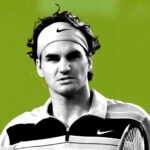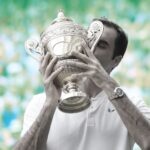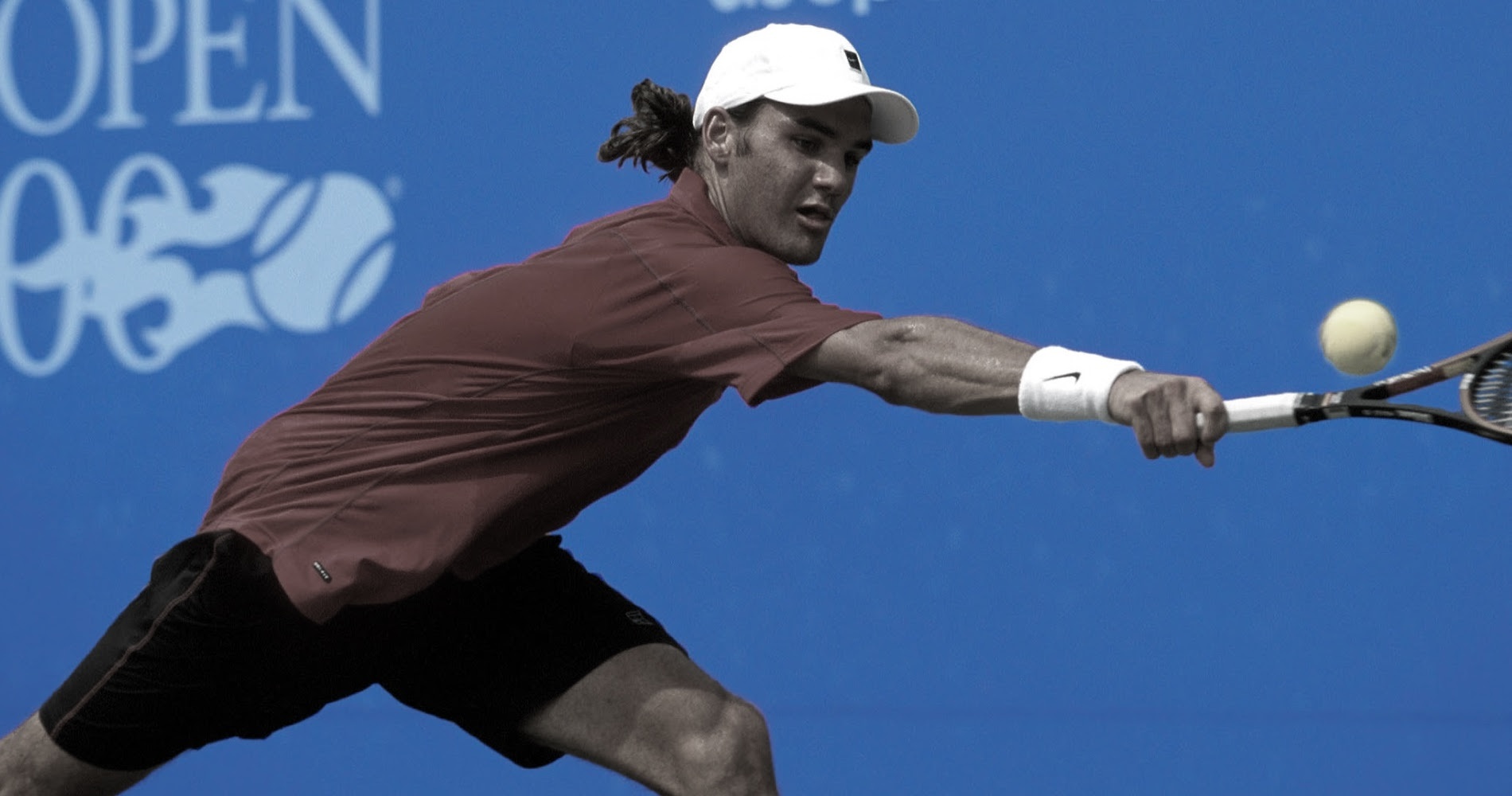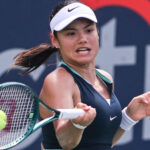October 29, 2006: The day Roger Federer won the first of his 10 Basel titles
Every day, Tennis Majors takes you back to one of the special moments in tennis history. On this day in 2006, Roger Federer achieved a lifelong dream of winning his hometown event and started a unique tradition with the ball boys in Basel
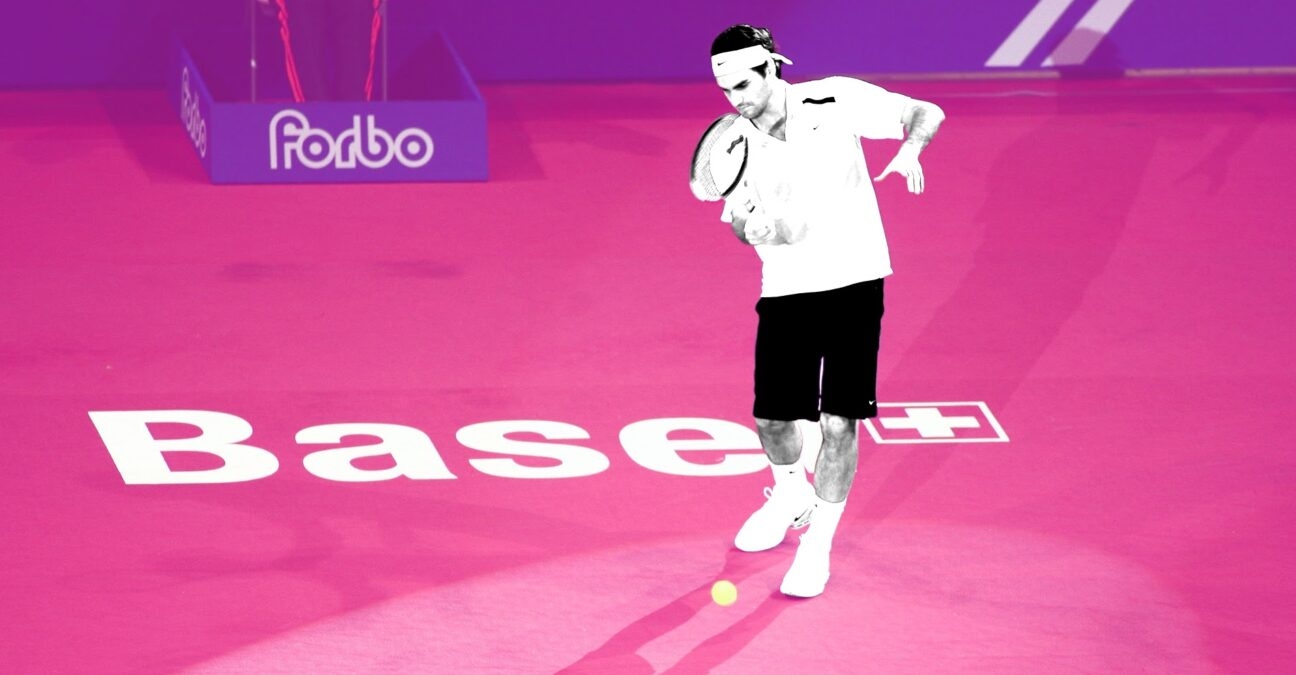 Roger Federer_Basel_On This Day_October 29
© Panoramic / Tennis Majors
Roger Federer_Basel_On This Day_October 29
© Panoramic / Tennis Majors
What exactly happened on that day?
On this day, October 29, 2006, world No 1 Roger Federer defeated Fernando Gonzalez (6-3, 6-2, 7-6 (3)) to win his hometown tournament at Basel for the first time. This victory meant a lot to the Swiss, who had been a ball boy there in 1993, and had already finished runner-up twice in front of his home crowd back in 2000 and 2001. It was Federer’s 44th career title, and his 11th in 2006, which remains one of his best years on the tour. By the end of his career, the Swiss had won the Basel title an incredible 10 times.
The players involved: Roger Federer and Fernando Gonzalez
- Roger Federer: The Swiss genius who had already won nine Grand Slam titles
Roger Federer was born in 1981 in Basel, Switzerland. After he finished 1998 as the world’s top-ranked junior, Federer performed well in his initial professional outings; in his first five main tour appearances in 1998 and 1999, he reached the quarter-finals three times in Toulouse, Marseille and Rotterdam. His smooth, elegant game and high-octane groundstrokes made a significant impression on the tennis world and soon, he was tipped as a potential world No 1.
The Swiss, who was very emotional during his first few years on the tour, eventually learned to master his nerves in 2003, when he claimed his first major title at Wimbledon by defeating Mark Philippoussis in the final, 7-6, 6-2, 7-6. A few months later, after triumphing at the Australian Open (defeating Marat Safin in the final, 7-6, 6-4, 6-3), he became world No 1 for the first time on February 2, 2004 – he held on to that spot tightly in the years to come.
At the time of the Basel event, in 2006, Federer had won nine Grand Slams: The Australian Open (2004, 2006), Wimbledon (2003, 2004, 2005, 2006) and the US Open (2004, 2005, 2006). Since he had ascended to the No 1 ranking, he had also collected 24 ATP titles, including 11 Masters 1000 tournaments. Federer had also won the season-ending AT Masters Cup in 2003 and 2004.
In 2006, his best year on the tour so far, he had already claimed 10 titles including three Grand Slams, and four Masters titles. He had lost only five matches, four of these against his only serious rival at the time, Rafael Nadal. The Spaniard was the main reason Federer had not won the French Open yet: he lost to Nadal in the Paris semi-final in 2005 (6-3, 4-6, 6-4, 6-3) and in the final there in 2006 (1-6, 6-1, 6-4, 7-6).
- Fernando Gonzalez: The Chilean with a powerful forehand who had just broken into the top 10
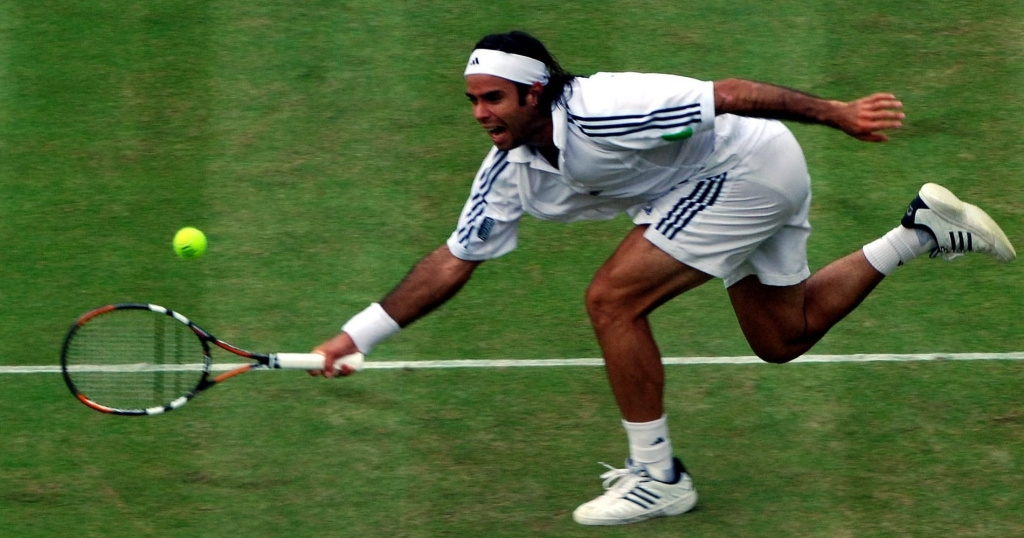
Fernando Gonzalez was born in 1980 in Santiago, Chile. He turned pro in 1999 and achieved his first notable result in 2000 when he won his first ATP title as a 352th-ranked qualifier in Orlando (defeating compatriot Nicolas Massu in the final, 6-2, 6-3). His game was built around his powerful forehand. Despite his success in Orlando, he wasn’t consistent at the top level until 2002. He clinched two more ATP titles in Vina del Mar (defeating Nicolas Lapenttii in the final, 6-3, 6-7, 7-6) and Palermo (beating Jose Acasuso, 5-7, 6-3, 6-1) in 2002. He also reached the quarter-finals at the 2002 US Open, where he was edged out by Sjeng Schalken (6-7, 6-3, 6-3, 6-7, 7-6).
In the following years, he remained a solid top 25 player, reaching the quarter-finals at Roland-Garros in 2003 (defeated by Juan Carlos Ferrero, 6-1, 3-6, 6-1, 5-7, 6-4) and Wimbledon in 2004 (lost to Roger Federer, 7-5, 6-2, 7-6). He accumulated a total of seven career titles, the most important one in Basel in 2005, where he defeated Marcos Baghdatis in the final (6-7, 6-3, 7-5, 6-4). In 2006, reaching the semi-finals in three Masters 1000 events (Monte-Carlo, Toronto and Cincinnati) propelled him into the top 10 for the first time in his career.
The place: St. Jakobshalle, Basel
Established in 1970, the Swiss Indoors Open became a prestigious event in 1977 when it became a part of the Grand Prix Circuit. That year, the champion was the great Bjorn Borg himself. Through the 1980s, the prize money increased almost every year, attracting the best players in the world. The tournament was won by the top players such as Ivan Lendl (1980, 1981), Yannick Noah (1982, 1987), and Stefan Edberg (1985, 1986, 1988).
In the 1990s, the Swiss Indoors became a part of the ATP World Series, and remained one of the most prestigious indoor tournaments in the world, won by the likes of Boris Becker (1992), Michael Stich (1993) and Pete Sampras (1996). The event took place at the St. Jakobshalle, an indoor venue with a capacity of 9,000 spectators.
The facts: Federer wins and then orders pizza for the ball boys in Basel
In October 2006, despite all his incredible accomplishments, two important titles were still missing from Federer’s trophy cabinet: Roland-Garros, and the Swiss Indoors in Basel.
The Swiss genius was born and had grown up in Basel, and was also a ball boy at the tournament in 1993.
“I loved being a ball boy here,” Federer told Tennis TV. “I was able to see the best players in the world first-hand and see how they would prepare, how they would sweat, how they dealt with the pressure. Those were good moments for me.”
This tournament meant a lot to Federer, and this is also why he felt disheartened after losing two finals there, in 2000 and 2001. In 2001, defeated by Tim Henman (6-3, 6-4, 6-2), Federer thought he may have missed his chance.
“I was never going to win, period. That was it. Because I thought I had two chances, I wasted both opportunities… You don’t get many more opportunities,” Federer said to atptour.com in 2018.
Nevertheless, on October 29, 2006, Federer, who had been the undisputed world No 1 for almost three years, had a third chance to win his hometown title. In order to get into the final, the maestro survived a major scare in the semi-finals, prevailing only 6-4, 3-6, 7-6 against Paradorn Srichaphan. In the final, he would face Gonzalez, whom he had just beaten in the final of the Madrid Masters 1000 (7-5, 6-1, 6-0).
Although the Chilean was in great form, Federer had a comfortable 8-0 lead in their head-to-head. After claiming 10 titles in 2006 already, the Swiss was full of confidence, and he didn’t give Gonzalez a chance, hitting 14 aces and losing only 17 points in 15 service games. After one hour and 59 minutes of play, Federer eventually triumphed in front of his home crowd by the score of 6-3, 6-2, 7-6(3).
The world No 1 didn’t forget his past as a ball boy at the Swiss Indoors, and he began his own tradition: post-final pizza parties with the ball boys.
“I had to wait for it,” Federer said in 2018. “It was hard for me. Then in 2006, finally, it all worked out, I got my first Basel and then everything changed forever. I knew I could do this result again. And I was able to defend and to handle pressure and all the expectations that surrounds this tournament for me. It’s been a wonderful tournament for me, especially doing it from being a ball boy here for two years, it’s a great feeling.”
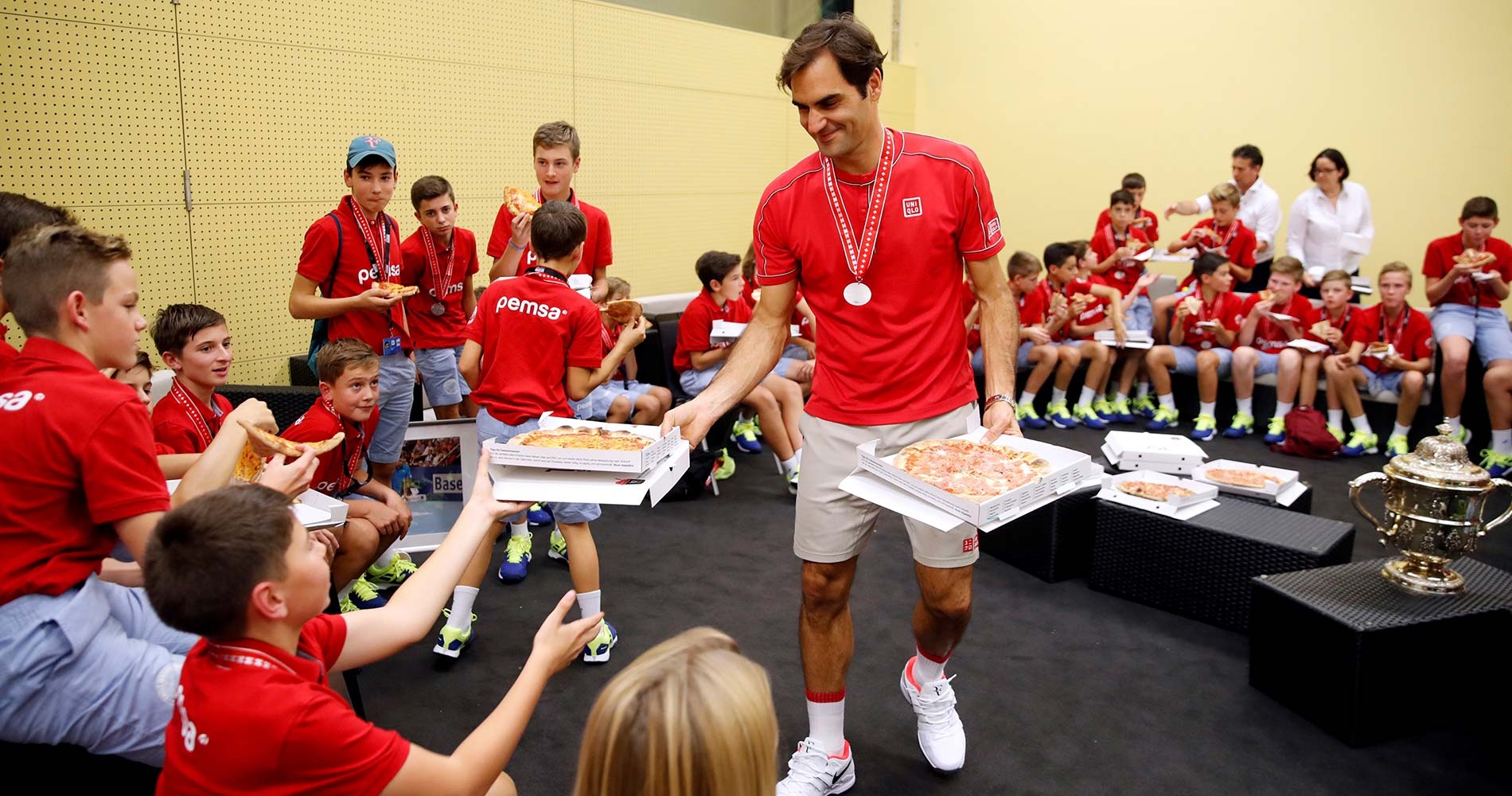
What next? Federer goes on to win the Basel title 10 times
Federer was right when he said that he could “do this result again”. He went on to win his hometown title 10 times in his career: 2006, 2007, 2008, 2010, 2011, 2014, 2015, 2017, 2018 and 2019.
Federer went on to win 20 Grand Slam titles, which places him third on the all-time men’s singles list behind Novak Djokovic (24) and Rafael Nadal (22) (as of October 2023).
Gonzalez would achieve his biggest result at the 2007 Australian Open, where he would reach the final, defeated by none other than Federer (7-6, 6-4, 6-4). This performance would propel him to his best career ranking, world No 5.
In total, both players would face each other 13 times before Gonzalez’s retirement in 2012. Only once would the Chilean prevail against Federer, winning their round robin match at the 2007 Masters Cup (3-6, 7-6, 7-5).
